Workers' struggles in Maruti Suzuki (Manesar) — The Underbelly of 'Make in India'
Published on
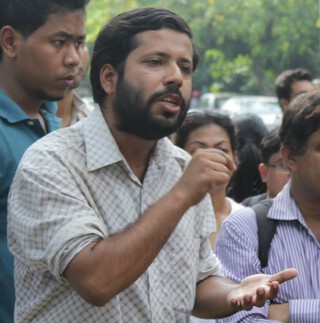
Amit is a PhD scholar at the Centre for Economic Studies & Planning, School of Social Sciences, Jawaharlal Nehru University, New Delhi. He is also the Organizing Secretary for the Workers Solidarity Centre, Gurgaon-Bawal. Concern invited Amit to speak on the status of the Maruti Suzuki workers' judicial struggle. The following is an edited transcript of his interactive session with the audience.
Why are labor issues relevant in academic spaces like IISc?
Generally in academic spaces, issues like labor are not discussed much. But these are extremely important because of the kind of definition in terms of 'what is development and how to achieve it' which is being put in front of our generation. This definition has a deep connection with and consequences for a large section of labor force in our culture. It is in this context that the journey of workers' struggle in Maruti Suzuki Manesar plant throws up some very pertinent questions and experiences.
Can you place this struggle in a historical context?
In the last thirty years, there has been a significant transformation in the economy at the global and the national level. This has changed our perspective towards the concepts of development, labor, growth and everything related to it. Initially, India’s priority was to have its own economic base so that it can compete with other countries in the global market. In that direction, there were production barriers, trade barriers and such to improve the national self-sufficiency. If we remember, we had Hindustan motors which used to produce the iconic car Ambassador in which, each and every component was made in a single big plant with thousands of workers. This process changed and a splitting up of production started.
If you have a laptop or car, different parts of it are produced in different parts of the world, assembled somewhere and sold somewhere else. In this process, technology comes from somewhere, cheap labor comes from elsewhere and it goes to some other market. This kind of development in world economy forced all countries to place themselves in this emerging global ladder. This has terrible consequences for labor forces across the world.
Can you give us an example?

There is a factory called Rico in Gurgaon which used to supply auto-parts to thecompanies General Motors and Ford in Canada and US. In 2009, there was a strike in Rico about forming a union. During that strike, Rico could not deliver those parts and as a result Ford and GM had to stop their production for three days. So, a strike in an auto-part company in Gurgaon has consequences to a company in US.
In a production process in any big company like Maruti, different parts arrive periodically at the plant, e.g., every couple of hours, and they are assembled. These supplying companies have their own suppliers and so on. It means that the production process should go on continuously and it is pushed to such a sophisticated level that hundreds of companies in multiple countries interact among themselves and is managed at the top level by a big company like Maruti to run its production floor on a day-to-day basis. Because of this globally inter - connected production chain system, even if a single company’s workers stop production, it has a magnified ripple effect across the chain. That is why the entire managerial class is hell-bent on creating a docile-labor force which cannot raise a voice.
If the government does not support this entire mechanism, Maruti and other companies will threaten to relocate their plant, eg - from Haryana to Gujarat or out of the country entirely, to say, Bangladesh. This will create a kind of helplessness in the government and as a result, the terms and conditions of this entire system are reproduced. Because of its internal competitiveness in terms of diluting workers' rights, it is an unending race to the bottom, ever reducing the rights earned by the workers. These rights, every one of which has been a result of protracted struggles of workers for generations, and the resultant laws, are being changed today. These changes create an irreconcilable conflict between the management and the workers.
With growth rate being touted as the only measure of development, the plan is to attract foreign investment by any means possible. One of the ways to do that is by providing facilities that the other countries don’t. Earlier the automobile industry was set in US. Now all the major automobile companies - Ford, General Motors etc., have plants in India, China, Brazil and South Africa.
The facilities provided by India in particular, are a race to the bottom: by offering the workers at cheaper wages, by removing any resistance from the workers by banning unionization, by weakening environmental laws and by providing cheap land by snatching it away from farmers. One such initiative was SEZ, Special Economic Zones. But SEZ was not that successful, even though huge tracts of land were acquired for them from the people, against which there was resistance all over the country. In 2011 the government formed a National Manufacturing Policy which proposed NMIZs - National ManufacturingInvestment Zones - which are much bigger than the SEZs. They are trying to form industrial corridors such as Delhi - Mumbai industrial corridor. For these big corridors, lands are being taken, multiple changes in legislative process like the new land acquisition bill are being brought. In addition, there are neo-liberal laws, where contractualization is the order of the day, the right to form a union or to strike, is snatched from the workers.
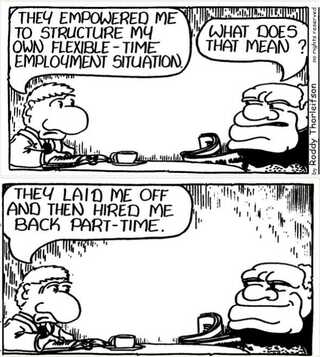
Job Security
In the last 20-25 years, the growth of generation of permanent employment in the organized sector has been negative. This is because, while the earlier laws mandated the employment of permanent workers for permanent work, in practice, those laws have been violated continuously. In today's liberalized economy, with all facilities in place, the government has created an underbelly of the development process where in an entire generation of ITI educated youth are in a precarious condition of never having a permanent job.
For example, after 2012, Maruti employs temporary workers with salaries that are much less than that of permanent workers for 7 months. After 7 months, there is a break of 5 months and after the break, the worker may or may not be called again. In this situation the general tendency is that whatever development takes place, it only results in no permanency of work force, intensification of work, no right to unionization and an insecure workforce.
Wages & Benefits
In 1953 there was a tripartite board consisting of employers, employees and government which divided wages into three categories - Living wage, Fair wage and Minimum wage with wages decreasing in that order. They recommended that in a sector where there is sufficient profit the workers should be given a living wage and if not, initially fair wage, gradually moving towards a living wage. In rare exceptions when a sector has no profit at all, the workers should at least get the minimum wage.
Maruti's profit for the last year was Rs 3371 crore. Among the net sales of Maruti, only 2% goes into employees cost, a lion's share of which is the total salaries of upper management, about 3Cr - 7Cr per year for each of the individuals. This wage gap between that of the workers and that of the top management increased hugely in the last 10 - 15 years, and the workers' - wage - share in the net sales has gone down drastically from 1990s.
Even though the total wages of the workers are such a small fraction of total salaries, the contention today is that it should be reduced even further. This is true not only for Maruti but all other big companies. Even when foreign investment comes to India, it is only by an explicit condition that they should have a free ride to extract thousands of crores of profit, but the wage share should keep going down.
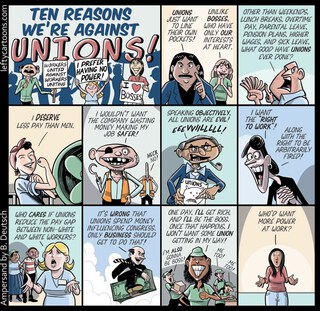
Now there is even a legal stamp on that facility. The New apprentice act says that apprentices can be employed for 3 years with wages that are even below the minimum wage. 1st year the employer can give 70% of the minimum wage, 2nd year 80%, 3rd year 90%, and at the end of 3 years the employer only needs to give the worker a certificate that he/she is 'skilled'. Under such a 'Skill India' program, the PM has recently said that we should increase the number of apprentices from the current number of 3 Lakhs to One crore. Utilizing this, companies can hire a batch of workers as apprentices for 3 years at wages that are even lower than the minimum wage, issue a certificate of skill and after that, hire another batch of apprentices. These apprentices do not get the benefits of other workers like union formation, gratuity, leaves etc. Even half of their pay is given by the government from the public money.
In addition to these laws that endanger the job security of laborers, there is a proposal to discontinue labor courts and replace them with industrial tribunals. This effectively douses any hope of a judicial remedy for unjust termination. Usually if a worker is dismissed illegally, he/she could file a case, which today takes at least 15 years to be processed in the lower courts. Even if the worker finally wins, management goes to the High Court or to the Supreme Court. So to fight it legally, the worker has to spend money for 20 - 25 years. There is no other mechanism that the workers can avail themselves of, even if there is a clear violation of the law.
Maruti's History
Maruti was a water shed project in Indian economy. It was started in 1983 by the Indian government in association with Suzuki group of Japan, with the former having a 25% share in the company. This kind of joint venture was the case even in the case of Hero Honda with the Hero group and Munjal group of India and other companies.
In 1990s, the central government began a process of liberalization, privatization and globalization, by which the Indian economy was open for investment by various foreign companies. As a consequence of these reforms, some sectors in the Indian economy tried to integrate themselves in global economy - one of which was the automobile sector. With the opening of markets, this sector too witnessed larger scale foreign investments. These investments went on to the point that in 1998, majority of the share went to Suzuki and became to be owned by it. With these changes in ownership, where Indian government was no longer the shareholder, the labor regime changed and the kind of practices and techniques that were used in Japan started being applied in India as well.
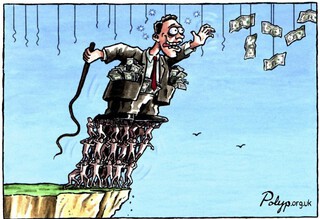
There is a long story of anti - unionization in Maruti's older plant. In that plant, there was a union set up by the management which was later taken over by the workers. When this workers' union started to demand more salaries around the year 2000, there was an attack from the management and it led to a workers' strike that went on for 3 months. After 3 months, the strike was crushed and a pocket union of the management was set up. This was done by throwing out most of the permanent workers of the plant or by dismissing them or by forcefully giving them VRS (voluntary retirement service). After that, the management started a process of contractualization and informalization to replace the permanent workers slowly by contract workers.
What was the work space environment like, in the plant that triggered the strike?
Given this history, the same process intensified in the Maruti's new plant in Manesar, which is at the center of dispute for the last 3 - 4 years. It is a relatively new and sophisticated plant set up in 2006 near Gurgaon. With 2007-09 being the period of global economic crisis, this new plant developed a more mechanized production process, more intense work conditions, more work load and worse labor regime.

In 2008-09, Maruti increase the scale of their production from what they could process before. This resulted in a huge work load on the workers with a large amount of overtime and even temporary conveyor belt lines (flexi lines) being set up. The working condition was such that workers could not drink water from a water bottle because in each 40 - 42 seconds, one car is produced. In that brief period, a car comes to the worker, he has to do 14 - 15 operations and the next car comes. This intense schedule was very much like the one depicted in the famous movie Modern times by Charlie Chaplin.
In this hectic schedule, the management has made sure that there would not be a single surplus second in an 8 hour shift. The workers have a break of 7.5 minutes to have tea at a canteen which is at a distance of a 3 - 4 minute walk. Because of this, it is not unusual to spot a worker sipping tea while in the toilets. If the worker is absent for a single day, the salary is cut by Rs 2000. If the worker is absent for 3 continuous days for any illness or whatever reason, then his entire incentive (for the term) is zero. If a worker makes a single mistake, he is thrashed by his supervisor or made to hold his ears and do crunches like a moorga. These dehumanizing acts were beyond the tolerance of workers and created a lot of anger among them.
Initially these workers were employed as trainees and they could not raise any objection to the increasing work load, the poor salaries or the work pressure because they could be thrown out anytime. The general practice is that, after 3 years of training, they are made permanent. In 2010, workers formed their own union consisting of both the contract workers and permanent workers. Management did not accept it even though management never had a legal right to intervene against a constitutional right of the workers to form their own organization.
When the labor union too refused to bow down, management started taking action and the workers went for strike in June 2011. For 13 days they were inside the factory and stopped the entire production chain, but the management ended it after that. Soon after it ended, management suspended 44 workers accusing them of slowing down the production among other things. The management also ordered a lock out that lasted for 33 days. After that, a settlement was reached by which 44 workers were suspended but the management refused to absorb the 1200 contact workers as permanent workers and tried to break the workers’ unity. The permanent workers however, decided to fight united and had a third round of strike in October 2011. After the third round, there was a huge pressure and the Haryana government got directly involved. Worker leaders were removed from the premises by jailing them for few days and after that, about 30 of them were forced to resign.
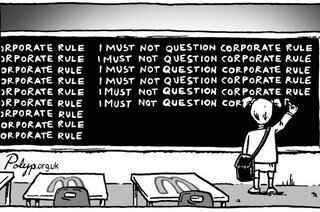
Figure 7: I must not question corporate rule
By this process, the management assumed that they successfully thwarted any unity among the workers. But the workers continued their struggle and ultimately formed a workers union in the March of 2012. Management even tried to buy the union leaders, but they were not successful. With the newly formed union, workers reiterated their demand for making contract workers permanent.
18th July 2012 was an important day because we have heard of it from media that a management guy was killed. This was planned by the management so that, if such a confrontation takes place, some workers can be victimized and the union leadership can be thrown out of the plant. The management started this conflict by suspending a worker and when the union argued against the suspension, management refused and informed the police and bouncers to be present. That day, there was a clash, a conference room in the premises caught fire and one HR manager died because of asphyxiation.
The Case & its Aftermath
After that incident, there was a huge crack down by the management. Initially 95 workers were jailed. Few days later, 147 more workers were jailed including the whole union body. About 2300 workers - roughly 3/4th of the entire strength of the company, including 546 permanent workers - were dismissed without any enquiry. After that, for a period of one year, production took place under the watch of a police gun in the entire region.
Even from a legal point of view, there is no specific evidence for the cases filed against the workers because of the following reasons:
- The guy who died did not have any injury above his knee. This does not legally amount to 'attempt to murder'. Even the postmortem report shows that he died because of the smoke.
- When the clash took place, the police was not allowed to enter the premises because the management planned this small clash to dismiss the workers leadership.
- Even though three ambulances and three fire extinguisher trucks were available, they were not utilized.
- Even though the entire plant is under CCTV coverage, management claimed that all of its footage was destroyed. That can't be true because there are multiple locations where the footage is preserved. The Gurgaon plant has a server in Japan as well. This seems to show that all this evidence was kept secret to hide what actually happened that day.
- The witnesses' statements too look like a ploy by the management. This is because, for the first set of 95 workers thrown inside jail, there were four witnesses sent by the management to testify that they had seen the workers rioting or causing a disturbance. In each of the witnesses' statements, arbitrarily 25, 25, 25 and 20 workers were named. The witness 1 for example, claimed that he only saw the workers whose name started from the alphabet A to H. The 2nd witness saw the workers whose name started from H to P, the next one from P to S and the last one S to Z.
If 2500 workers - as they have been accused - really took part in that incident, it would have resulted in a larger number of causalities. Even with all that 'evidence', the charges of murder could not be established. But when the workers applied for bail, it was refused. When they went to High court, even the High court judge said,
"If Maruti workers get bail it will send a wrong message to the investors and that investment will be hampered in this region."
Ultimately the trial process was over and those who had no witnesses against them or if the witnesses could not identify them, only those workers got bail. Even a single worker who was named in this trial process and was identified, falsely or whatever be the reason, did not get bail. 46 workers including all of the union body are still in jail.
Needless to say, the case is not proceeding in a strictly constitutional manner. From every angle and from every corner such as from government, police, administration, media and even the judiciary, it has been a grossly unanimous political decision by the elite classes to make this case as an example for the entire working class in that region. In the coming couple of months, with the possibility that the Maruti workers would be given the maximum possible punishment, it seems to be done in a way that the ruling elites are showing the workers,
"If you indulge in struggles for rights, even for basic rights like union formation and right to decent living conditions, these are the consequences you have to deal with".
Small Victories & Path Ahead
In Maruti case, during the strike and even after the strike, the workers' strength did push back against the management to recognize few aspirations that the workers had, like increasing the 7.5 min tea break to 15 min, reducing the assembly line speed from 42 sec to 60 sec, having a reliever if the worker goes to the toilet, someone that can manage the assembly line production.

Through their daily struggles, the workers are realizing that their strength lies in organizing at some local point of the globally inter connected production chain. Only then, they can have a bargaining capacity to improve their material conditions. As a trade union activist, when I interact and try to co-ordinate such initiatives, we feel that there is no other way for these workers but to unite. Even in a single isolated factory, this kind of resistance cannot be developed because the entire system is working against it. This realization has created a material objectivity among workers of different factories, workers along the value chain and workers of different companies in different parts of the country to come together for their rights. Therefore, there is a need to go beyond the traditional trade union politics which is permanent workers based and individual factory based, to develop solidarity amongst workers on a regional basis.
Maruti became a symbolic struggle and obtained solidarity from across the country from teachers, students, workers, journalists for the last 3 - 4 years. It is because of their support that the struggle could sustain, which would otherwise have been impossible because the workers are facing one of the toughest management of this country backed by the state and administration. Even as the judgement is about to be passed, Maruti workers are campaigning in different parts of the country about the workers' struggles beyond Maruti – the horrible situation of the people who Make in India and are raising questions about the kind of development we really need. One that will benefit the larger masses of our country or the kind that is reduced to a single statistic, as growth rate at the cost of dehumanizing the workers and peasants in our country.
Image Credits
I must not question corporate rule -- by polyp, released under the following terms